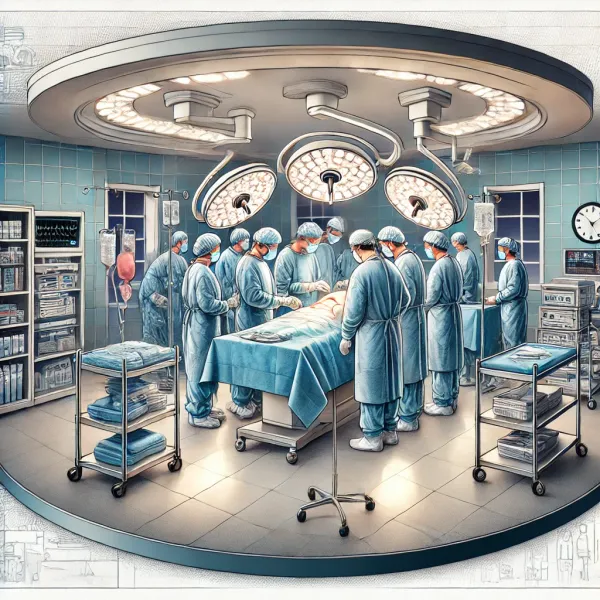Gamma Knife

Introduction to Gamma Knife Surgery
The Gamma Knife is a highly specialized medical device used for treating brain tumors, vascular malformations, and other brain abnormalities without the need for traditional surgery. Despite its name, the Gamma Knife does not involve any cutting; rather, it uses focused beams of gamma radiation to target and treat affected areas with extreme precision. This procedure is a type of stereotactic radiosurgery (SRS), which allows doctors to treat conditions within the brain without making any incisions.
How Does the Gamma Knife Work?
The Gamma Knife uses 192 or more focused beams of gamma radiation, which converge to deliver a single high dose of radiation to a specific area. Each individual beam has a low intensity, so it does not damage the tissue it passes through. However, where all beams meet, the combined dose is strong enough to affect the targeted cells. This technology allows for pinpoint accuracy, making it ideal for treating small to medium-sized lesions in the brain.
The Gamma Knife Procedure
- Consultation and Planning: The process begins with a detailed consultation with a neurosurgeon or radiation oncologist. Advanced imaging techniques, such as MRI, CT, or angiography, are used to create a detailed map of the brain and the lesion or abnormality that needs treatment.
- Frame Placement or Mask Fitting: To ensure accuracy during the procedure, a stereotactic frame is placed on the patient’s head or a custom-made mask is fitted. This helps to keep the head completely still during treatment.
- Treatment Planning: Using the images from the scans, a specialized computer system helps doctors plan the exact coordinates for radiation delivery. The goal is to target the lesion while minimizing exposure to healthy surrounding tissue.
- Gamma Knife Treatment: The patient is positioned on a treatment table that slides into the Gamma Knife machine. The treatment is painless and usually takes between 30 minutes to a few hours, depending on the size and shape of the target area. Patients are awake throughout the procedure and can communicate with the treatment team.
- Post-Treatment Care: After the procedure, patients can often go home the same day. There is minimal recovery time since no incisions are made. Follow-up appointments are necessary to monitor the treatment's effectiveness.
Benefits of Gamma Knife Surgery
- Non-Invasive: No surgical cuts or incisions are required, reducing the risk of infection and complications.
- High Precision: The Gamma Knife is known for its ability to target brain abnormalities with sub-millimeter accuracy.
- Minimal Recovery Time: Most patients can return to normal activities within a day or two.
- Effective for Hard-to-Reach Lesions: Ideal for treating tumors or abnormalities located deep within the brain.
Conditions Treated with Gamma Knife
The Gamma Knife is commonly used to treat:
- Brain Tumors: Both benign and malignant, including metastatic brain tumors.
- Arteriovenous Malformations (AVMs): Abnormal tangles of blood vessels in the brain.
- Trigeminal Neuralgia: A chronic pain condition affecting the trigeminal nerve in the face.
- Acoustic Neuromas: Benign tumors on the nerve that connects the ear to the brain.
Potential Side Effects and Risks
While Gamma Knife surgery is generally safe, potential side effects may include:
- Headache or Fatigue: Common immediately after treatment.
- Swelling or Inflammation: Rare cases may require medication.
- Nausea: Some patients may experience nausea, especially if the treatment area is near sensitive brain regions.
Conclusion
Gamma Knife surgery represents a revolutionary approach in neurosurgery, offering a precise, non-invasive treatment option for various brain conditions. With advancements in technology, it continues to provide hope and better outcomes for patients requiring brain surgery.



